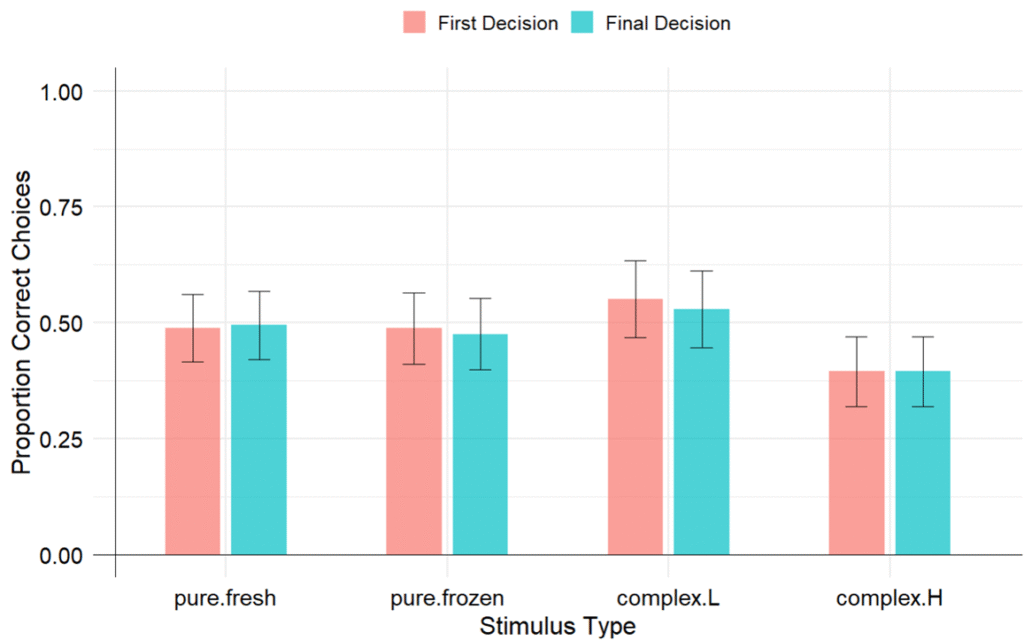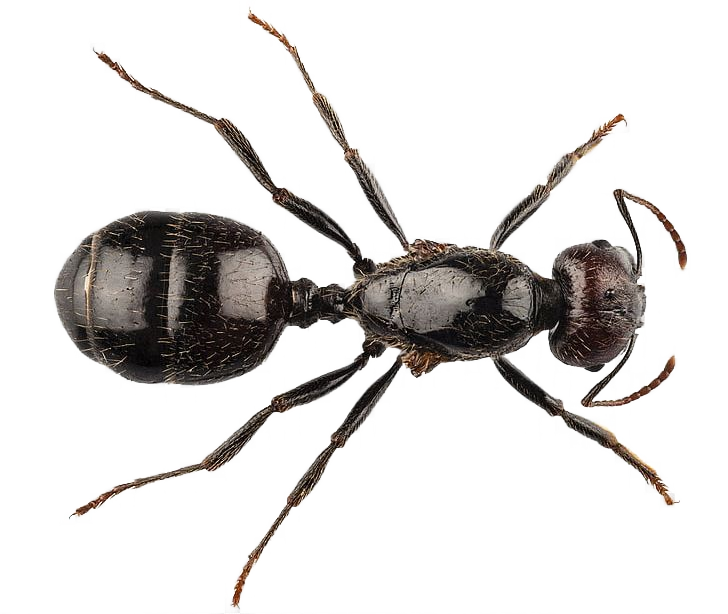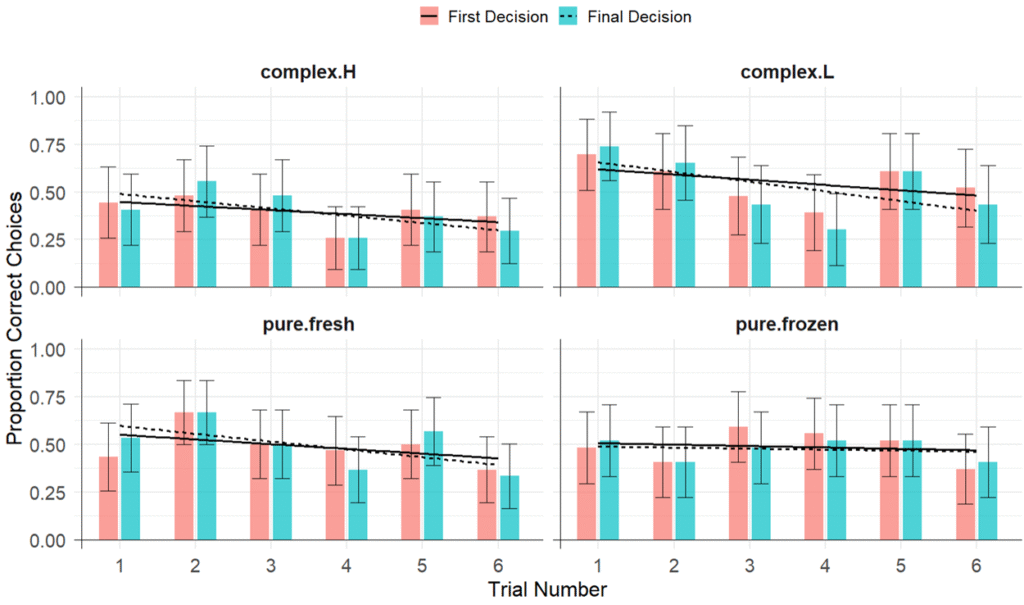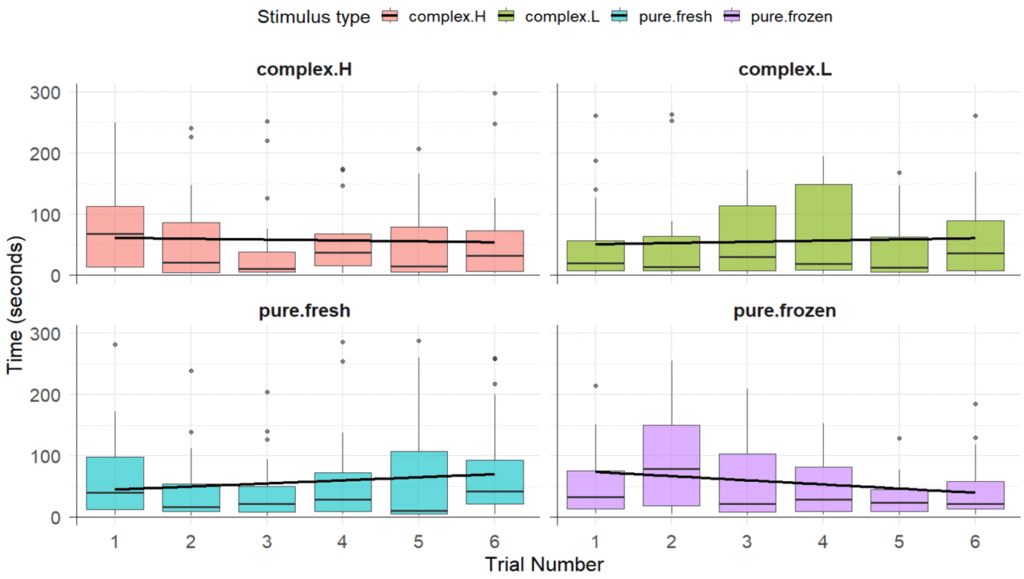In total, 219 ants were trained and tested.

Neither stimulus type nor arena type had a significant effect on the ants’ performance during the test trials.
Ants trained with complex L performed significantly better during testing when trained in the straight arena then in the Y maze.
The number of successful training trials does not predict the ants’ performance during the testing trials.


There was a trend for a lower success rate when training with complex H in both first and final decisions (p=0.07 and p=0.09, respectively).

As you can see my results are not very positive. Let’s look to see if the ants at least improved through the course of the training trials.

The success rate decreased over the training trials in the Y arena as you can see by looking at the trend lines (in black on the graph).


In the Y maze: there was a nonsignificant effect of stimulus type on the latency to reach the reward.
Only with the pure.frozen stimulus did the ants seem to go faster each trial. In contrast, with stimuli pure.fresh and complex L the ants seemed to go slower each trial.
In the straight arena: the ants reached the reward faster (though not statistically significant).
Ants in trained in the straight arena were significantly faster to reach the reward than ants trained in the Y maze (estimate= -34.64 ± 6.4 seconds, p<0.01).
